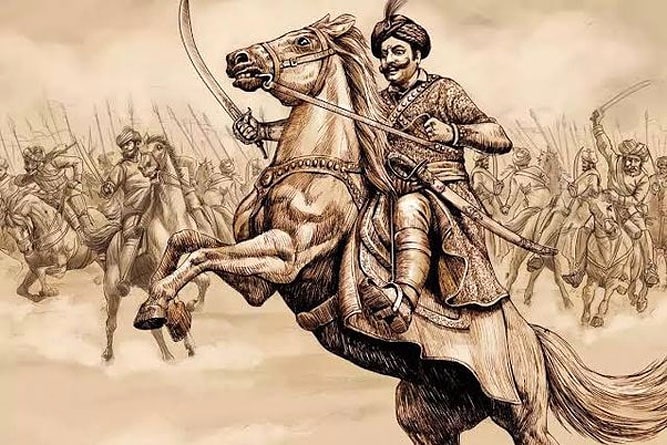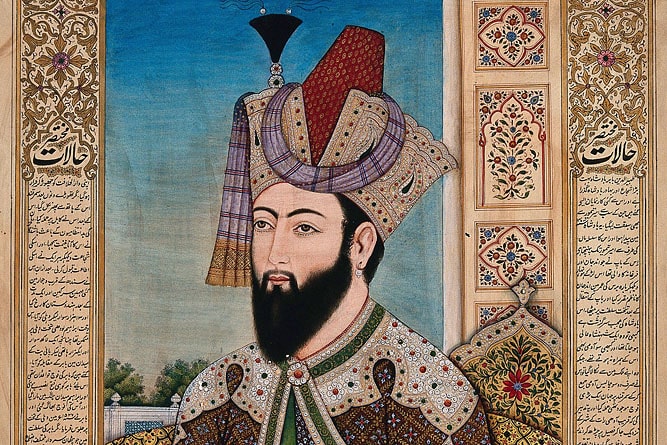The word “Rajasthan” is derived from the Sanskrit and Hindi word “Raja” meaning King. The second half of the name i.e. “sthan”, is either derived from the Sanskrit word “sthana” or the Persian word “st(h)an”. Both these words mean land. Thus, Rajasthan translates to the land of kings, and rightfully so!
Rajasthan, throughout time, has seen the rule of great lords and brave warriors. There was a dynamic shift of power and hundreds of battles fought on this land.
The history of Rajasthan is complex and starts all the way from 500,000 years back. In order to simplify things, we will break the history into different sections of time:
1. The Prehistory of Rajasthan (Before 500 BC)
2. The Early Historic Period in Rajasthan (500 BC - 700 AD)
According to the current researches, Rajasthan served as a hotspot for early settlements due to its resourceful geological features.
Archaeological evidence has been found that proves the existence of the Old Stone Age in Rajasthan. There has been no evidence related to the early Stone Age (Neolithic period), hence, it is believed that the late Stone Age serves as the starting point of prehistory.
Following the Stone Age settlements are the copper using cultures, evidence for which have been located in the Kalibangan and Ghaggar valley of northern and northwestern Rajasthan.
Another culture found was the Ahar culture. The latest excavated site for the Ahar culture has been Balathal in Udaipur region.
The Indus valley (Harappan) and the iron using (post-Harappan) cultures are also proved to be there. The other archaeological finds from the Rajasthan region belong to the Mauryan, Buddhist, Indo Greeks, Yaugheyas, and Sunga-Kushan period.
Early Kingdoms and Republics
The history of India before 500 BC is in fragments and is based on not so contemporary texts. These texts do mention areas that resemble the now known parts of Rajasthan but it is more of assumption than anything else.
Post 500 BC we have some firmer base to stand on.
During this time the Matsyas were one of the prominent kingdoms in Rajasthan. Present day Bairat, resembles the capital city of the Matsya kingdom which was called Viratnagar. Recently Bairat has been renamed to Viratnagar.
Apart from Matsyas, kingdoms of Shalvas, Madreyas (people of Madra) and Jangalas (people of Jangal) were also identified. Their territories seemingly extended between Alwar and north Rajasthan.
Another kingdom was the Surasenas, with their capital being “Methora” (Mathura). Yaudheyas is yet another early kingdom, which originally resided in eastern and western Punjab, but now have proven to have tracts in Rajasthan, Haryana and western Uttar Pradesh too.

Prominent Empires and Dynasties
Near 300 BC, Chandragupta Maurya established the Mauryan Empire in Rajasthan. By the first century BC there was a decline in the Mauryan Empire. Following this, many rulers asserted their dominance on the area. First the Bactrian Greeks took control, later the Kushans and Sakas also came to dominate large tracts of land. King Kanishka was one of the most prominent rulers of the Kushan dynasty.
With the decline of Kushan power, groups like Arjunayanas, Malvas, Yaudheyas, abhiras, Sibis, etc. re-asserted their power in regions of Rajasthan. By the second half of the fourth century AD, the Gupta Empire took control. The Gupta era ended around 570 BC.
Next, King Harsha Vardhan of Thaneshwar and Kanauj (606-647 AD) emerged as a prominent ruler.

The Rajputs
Rajput is a corrupt form of the vedic word “Rajputra” meaning a king’s son. The Rajputs as a group substantially ruled the history of northern India from 7th-8th century onwards.
Around this period many Rajput groups came to light. Some important ones being the Imperial Pratiharas, the Pratiharas of Mandore, the Chauhans of Shakambhari and Nadol, the Mauryas of Chottor and Kota, the Nagas, the Parmars, the Guhilas, the Bhatis, and the Tomars.

Prithviraj III played a significant role in history. His defeat in the second battle of Tarain was a watershed in Rajasthan’s history. His death marked the end of nearly a 500-year-old dynasty.
Near the 14th century, Chittaur was conquered by Allaudin Khilji, the Delhi Sultan. The 14th and 15th centuries observed the consolidation of small states into larger ones.

The Mughal Empire
Post the defeat of Rana Sanga of Mewar against Mughal Emperor Babur, Mughals started rising to power.
The most drastic change came about in the states of Rajasthan when Emperor Akbar came to power. Ultimately, most of the kingdoms came to an understanding with Akbar. By the end of the 16th century, the Mughal Empire was acknowledged as the central authority. Rajasthan became a united province under Akbar’s rule.
The Mughal Empire led to a lot of progress in terms of employment for the male demographics of the Rajasthan regions, however, their unfair tax related policies for farmers and other tactics led to communities like the Jats to revolt against them.

When Aurangzeb died, the rise of the Marathas, beginning from mid-17th century, became a challenge for both the Mughal Empire and the states within Rajasthan.
Marathas terrorised the region towards the end of 18th century, states that were conquered by the Marathas faced excessive incursions and depletion in the treasuries. The burden on the local merchants, local farmers, craft workers etc. was devastating.
This was a major reason of why when the East India Company came into power in the early 19th century, most state rulers turned to them.

The British Empire
Rulers from various states started to come for solutions and advice from the East India Company.
Since most regions lacked resources, they agreed to create an alliance with East India Company. The British signed treaties with various Rajput leaders who were ruling at the time and consolidated the Rajasthan state into the province of “Rajputana.”
By the end of the 19th century, Rajasthan observed a degree of political stability and economic recovery.

Post Independence, the princely states of Rajputana, formed a new Rajasthan. Individual kingdoms and monarchies ceased to exist and a democratic rule came into play.
In seven stages, from March 1948 to November 1956, the integration of Udaipur (Mewar), Jaipur, Jodhpur, Bikaner, Jaisalmer, Kota, Bindu, Tonk, Jhalawar, Kishangarh, Alwar, Bharatpur, Sirohi, Dholpur, Karauli, Dungarpur, Banswara, Pratapgarh, and the chiefships of Kushalgahr and Lawa took place and became one Rajatsthan.
